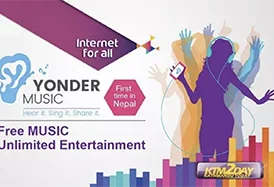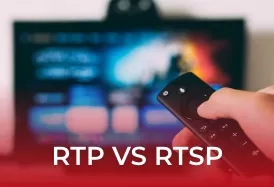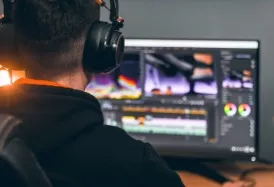Need to deliver content everywhere? Call Cardinal Peak for audio and video streaming service development.
About 88% of U.S. adults subscribe to at least one streaming service, and more are coming to market every day. Further, consumers expect their content on anything from a smartphone to a 98-inch, 8K screen with connectivity ranging from 1Gbs service to two bars of coverage while driving. With a greater depth of content choices — including VR and AR — coming to the mainstream, networks and devices will continue to be challenged to meet consumer demands. Sophisticated processing occurs in products at every step of the path from media generation to consumption. Our expertise, relevant to audio and video streaming architecture, includes embedded hardware/software, DSP, cloud/mobile infrastructure, encoding/decoding and playback are essential for success.
Cardinal Peak has worked in the cable and video industry for decades and brings the solid base of experience to ensuring your customers have the best possible experience.
Audio & Video Streaming Architecture Case Studies
From VOD development to STB software development, Cardinal Peak works with a wide range of video streaming architectures including the projects below.

Designing a Next-Gen Streaming Media Platform
We designed and developed a proprietary streaming media platform including a containerized service to handle all aspects of media ingest, ad insertion, transcoding, metadata processing and recording to cloud storage.

Remote Surveillance Camera System Development to Modernize Investigations
In this case study, Cardinal Peak’s video product design and development expertise unlocked remote accessibility and significantly more efficient intel surveillance, helping one of New Jersey’s largest private investigation firms realize an astounding 80% profit boost.

Developing a Streaming Music Service
Yonder is a music streaming service similar to Spotify, Apple Music and Google Music, but with a variation on the subscription business model – instead of monthly payments, music streaming is bundled with the sale of a mobile device or a data plan.
We designed and developed a proprietary streaming media platform including a containerized service to handle all aspects of media ingest, ad insertion, transcoding, metadata processing and recording to cloud storage.
In this case study, Cardinal Peak’s video product design and development expertise unlocked remote accessibility and significantly more efficient intel surveillance, helping one of New Jersey’s largest private investigation firms realize an astounding 80% profit boost.
Yonder is a music streaming service similar to Spotify, Apple Music and Google Music, but with a variation on the subscription business model – instead of monthly payments, music streaming is bundled with the sale of a mobile device or a data plan.
Custom Streaming Solution FAQs
What is Audio Streaming Service Development?
Audio streaming services are comprised of cloud services that offer customized audio streams and the end-user audio streaming apps that are used to consume those streams. Most of us are familiar with audio streaming apps such as Spotify or Apple Music and the features they provide for playback control, account management and listening preferences. Given the competition for audio streaming app development, it is important to provide a seamless and intuitive UX. For most streaming services it will be necessary to develop apps for smartphones (iOS and Android) and apps for laptop/desktop environments too. With the popularity of smart speakers, it is advisable to include those platforms in your roadmap as well.
While developing robust audio streaming apps that are intuitive and thoroughly tested on all target platforms presents challenges, the more complex aspect of audio streaming architecture is the supporting cloud service that manages user accounts and preferences to provide customized streams. Beyond user account management, the cloud is responsible for managing all the content. As content is not static, it is necessary to automate processes that ingest, catalog and store new content whether that be new musical releases, new podcasts, or new radio shows. Not just the content stream is unique to the listener, so are the ads. Again, the cloud system needs to be able to insert the right regional or targeted ads into each stream based on the user’s profile and preferences. Customizing content may involve a variety of tools such as AI to optimize each stream based on a user’s history and preferences. Finally, in the development of any cloud system, there are considerations for scaling. For example, when the Yonder Music system was launched it was rolled out to 15 million users in the first two weeks without knowing how many users would adopt the service. The system needed to be designed so it could auto scale to support hundreds of thousands of simultaneous users, yet not consume more cloud server capacity than was necessary at any given time to minimize costs.
What Technology is Used to Create Video Streaming Architecture?
Similar to audio streaming service development, video streaming service development for entertainment includes the design of a cloud application and video streaming app development. There are often a variety of apps to support video streaming devices such as Roku, FireTV, Android/iOS smartphone and internet browsers. As video streams are large, it is necessary to encode the video to optimize compression and may even involve adaptive bitrate solutions which scale to the available bandwidth to deliver the right resolution on each device. We have worked on every aspect of video streaming systems including cloud and mobile. Contact us to discuss your needs.
With the proliferation of cameras in the last decade, the variety of video streaming architectures has grown beyond the streaming entertainment solution described above to address other applications such as using cameras for enterprise security, home security, agriculture, warehouses, food prep, and more. For example, imagine a customer that has several cameras in thousands of convenience stores that they want to monitor for specific activities. This type of system is likely to use cloud-based and edge-based AI to perform the first level review of the camera data. Depending on the complexity of the behavior being monitored, the AI may escalate to human review. This scenario reverses the classic entertainment example of one data source with many viewers to be many sources (cameras) with a few viewers and requires a significantly different video streaming architecture. In another scenario, imagine the average smart home with a couple of cameras that are only occasionally watched by a single viewer. This situation is closer to one source to one viewer and would utilize a different video streaming architecture to optimize performance and minimize operational costs. Each of these solutions requires a different video streaming architecture and we have worked on them all.
For additional information on our video experience, check out our digital video product design page that focuses on the devices and technologies for individual video streams as opposed to the management and distribution of a large number of streams as described on this page.
What Experience Do You Have Creating Custom Streaming Solutions?
Cardinal Peak has decades of experience working in the cable, video and radio industries and we are committed to delivering the best possible solutions for our customers. We have created multiple custom streaming solutions for the audio and video markets. We have also developed non-entertainment based video streaming systems for other markets including both enterprise and residential security.
Check out our streaming case studies, including an Amazon Kinesis Video Streams and edge machine learning smart cat detector for real-time remote monitoring.
Audio and Video Streaming Development Related Articles

The Many Ways to Stream Video Using RTP vs RTSP
How can you stream video encapsulated in the Real-time Transport Protocol, or RTP, and still claim to be standards compliant? RTP is used primarily to stream either H.264 or MPEG-4 video and is a system protocol that provides mechanisms to synchronize the presentation different streams.

Understanding Streaming Protocols: How to Choose the Right One for Your Needs
Learn the differences between popular streaming protocols like RTMP, HLS and DASH to make an informed decision about which protocol to use to meet your video content needs.

World's Smallest H.264 Encoder
How can you stream video encapsulated in the Real-time Transport Protocol, or RTP, and still claim to be standards compliant? RTP is used primarily to stream either H.264 or MPEG-4 video and is a system protocol that provides mechanisms to synchronize the presentation different streams.
Learn the differences between popular streaming protocols like RTMP, HLS and DASH to make an informed decision about which protocol to use to meet your video content needs.
